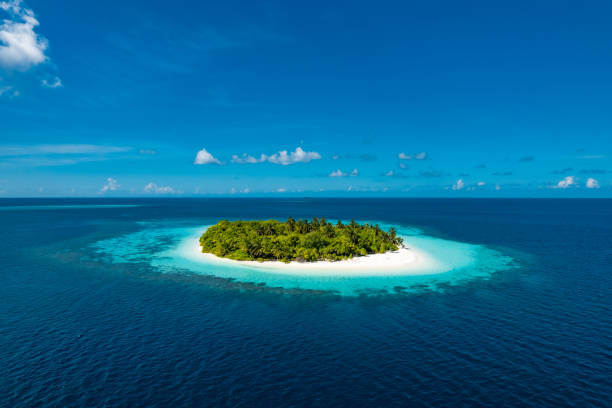Nestled in the heart of Nevada, an awe-inspiring volcanic crater stretches 3,280 feet in width and plunges 427 feet deep into the earth. This remarkable feature, called Lunar Crater, is the state’s largest natural crater. Despite its name suggesting extraterrestrial origins, Lunar Crater is a product of Earth’s fiery history, a quiet testament to an ancient volcanic eruption. The crater’s once molten lava flows have solidified, creating a surreal, moon-like landscape that continues to captivate visitors.
Lunar Crater is a maar, a volcanic formation caused by explosive eruptions that leave behind a wide, shallow depression. Unlike typical craters, maars are large and broad due to the nature of their formation. First recognized in 1973 as a National Natural Landmark, Lunar Crater offers a rare glimpse into Nevada’s geological past. Though its name evokes thoughts of space exploration, the crater’s appearance closely mimics the barren surface of the moon, making it a perfect location for studying celestial terrain.
The Landscape and Flora Around Lunar Crater
Surrounding the crater is an ancient volcanic field, rich in geological features such as cinder cones, basalt flows, and the remains of extinct volcanoes. The area is also a vibrant haven for flora, with colorful wildflowers dotting the landscape during certain times of the year. In addition to Easy Chair Crater, a smaller formation nearby, there are over 20 other extinct volcanoes scattered throughout the field. This remarkable blend of rocky terrain and blooming plants has earned the area the title of “Earth’s magic” by previous visitors, highlighting its otherworldly beauty.
A Hidden Gem for Adventurers and Photographers
Lunar Crater, managed by the U.S. government, is a publicly accessible site with no admission fee. Visitors are free to explore year-round, though those venturing here during the summer months should be prepared for high desert temperatures. The site remains open 24 hours a day, offering ample opportunities for photographers to capture the barren beauty of this landscape under the changing light of day or night. Keep your eyes peeled for elusive desert wildlife, which adds a mysterious charm to the crater’s surroundings.
The Unique History of Lunar Crater as an Astronaut Training Ground
Lunar Crater is not only a geological marvel but also holds a place in history as a former NASA astronaut training site. In 1972, astronauts preparing for the Apollo 17 mission to the Moon used the crater as a “lunar analogue” site. Lunar analogues are Earth locations that resemble the moon’s surface, allowing astronauts to rehearse operations in realistic settings. Astronauts practiced everything from geological sample collection to piloting a Lunar Roving Vehicle simulator. These training exercises were crucial for astronauts, helping to ingrain procedures into their muscle memory before embarking on the demanding mission to Taurus-Littrow, a valley on the Moon’s surface.
NASA’s policy analyst Stephen Garber shared that the purpose of these simulations was not only to familiarize astronauts with the terrain but also to ensure they could complete tasks efficiently under pressure. “The field training was really emphasized… because [NASA] wanted to ingrain the procedures in the astronauts’ muscle memory,” he noted. The effectiveness of Lunar Crater as a training ground speaks volumes about the critical role these analogues played in preparing astronauts for the real lunar surface.
How to Visit Lunar Crater: A Remote Desert Adventure
Getting to Lunar Crater requires a bit of an adventurous spirit. The site’s remote location, over five hours east of Reno and four hours north of Las Vegas, makes it an ideal destination for a road trip through Nevada’s desert. For travelers heading from Reno to Las Vegas, consider taking the Free-Range Art Highway (Interstate 95), which offers a scenic route filled with quirky towns and unique roadside art.
The journey to Lunar Crater is about 90 minutes off the highway via U.S. Highway 6 East, starting from Tonopah, a historic mining town. Once you reach mile-marker 79, a sign for the Lunar Crater Back Country Byway will lead you onto a 24-mile dirt road loop that encircles the crater. This unpaved path is best navigated with a four-wheel-drive vehicle, so ensure your car is equipped for the rugged terrain. The entire loop takes about one to two hours to complete.
Before embarking on this journey, it’s important to fill your gas tank and stock up on food and water, as there are no services available along the way. While in Tonopah, consider staying at the Clown Motel, known for its eerie decor and reputation as one of the scariest motels in America. Alternatively, head to Las Vegas for a more conventional stay after your thrilling road trip.
Disclaimer – Our team has carefully fact-checked this article to make sure it’s accurate and free from any misinformation. We’re dedicated to keeping our content honest and reliable for our readers.








